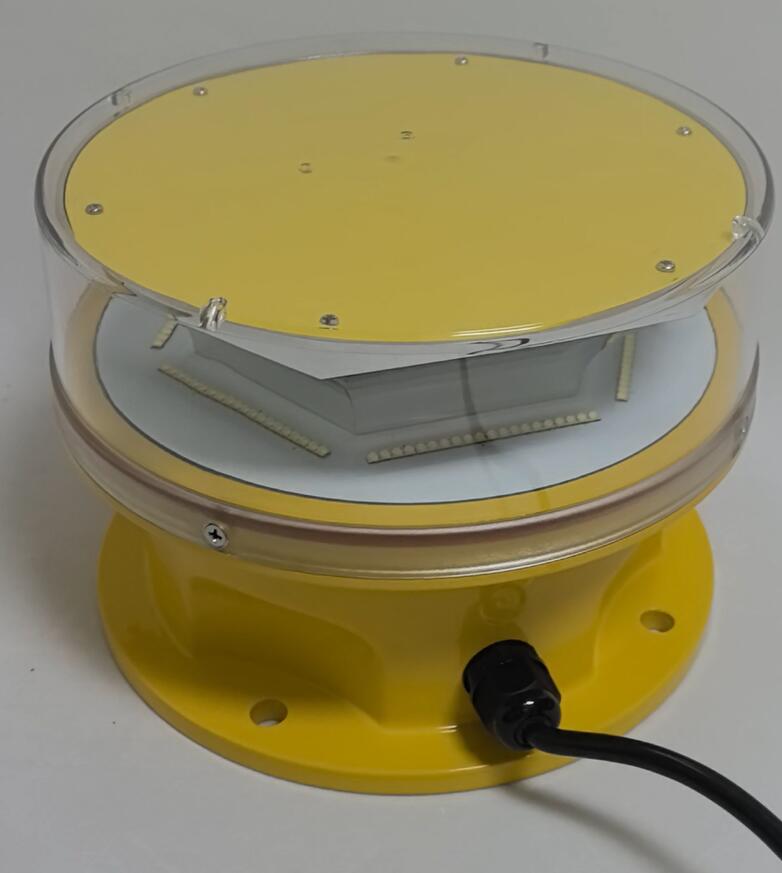LED Aircraft Warning Lights: Revolutionizing Aviation Obstruction Safety
In the ever-evolving world of aviation safety, LED aircraft warning lights have become a game-changer. These advanced lighting systems ensure that tall structures such as communication towers, wind turbines, and skyscrapers remain visible to pilots, reducing the risk of collisions. Unlike traditional incandescent or halogen lights, LED-based solutions offer superior efficiency, reliability, and longevity. This article explores the significance, benefits, regulations, and future trends of LED aircraft warning lights in modern aviation.
The Shift from Traditional to LED Aircraft Warning Lights
For decades, obstruction lighting relied on incandescent and halogen bulbs. However, these systems had several drawbacks:

Short lifespan – Frequent replacements were needed.
High energy consumption – Increased operational costs.
| LED Aircraft Warning Lights |
Fragility – Vulnerable to harsh weather conditions.
The introduction of LED aircraft warning lights addressed these issues, offering:
Longer lifespan – Up to 100,000 hours of operation.
Energy efficiency – Consumes up to 80% less power.
Durability – Resistant to vibrations and extreme temperatures.
This shift has made LED technology the preferred choice for aviation obstruction lighting worldwide.
Key Benefits of LED Aircraft Warning Lights
1. Enhanced Visibility and Safety
LEDs produce bright, focused light that improves visibility for pilots, especially in low-visibility conditions such as fog, rain, or darkness. Their instant-on capability ensures no warm-up time, which is critical for aviation safety.
| LED Aircraft Warning Light |
2. Lower Maintenance Requirements
With a significantly longer lifespan than traditional bulbs, LED aircraft warning lights reduce the need for frequent replacements. This is particularly beneficial for remote or hard-to-access structures like offshore wind turbines or mountain-top communication towers.
3. Energy Efficiency and Cost Savings
LEDs consume far less electricity, making them ideal for solar-powered systems and reducing long-term operational expenses. This aligns with global efforts toward sustainable aviation infrastructure.
4. Customizable Flash Patterns
Modern LED systems allow adjustable flash sequences, improving recognition by pilots and complying with various international aviation standards.
5. Reduced Light Pollution
Advanced optics in LED aircraft warning lights minimize unnecessary glare, addressing concerns from environmentalists and nearby communities.
Regulations and Standards for LED Aircraft Warning Lights
Aviation authorities worldwide have established strict guidelines for obstruction lighting, including:
FAA (Federal Aviation Administration) AC 70/7460-1L – Specifies lighting intensity, colors, and flash rates for different structure heights.
ICAO (International Civil Aviation Organization) Annex 14 – Provides global standards for obstacle lighting.
EASA (European Union Aviation Safety Agency) Regulations – Ensures compliance across European airspace.
LED aircraft warning lights must meet these standards to ensure uniformity and reliability in aviation safety systems.
Applications of LED Aircraft Warning Lights
These lights are used across various industries where tall structures pose a risk to aircraft:
1. Telecommunication Towers
Ensure visibility for low-flying helicopters and small aircraft.
Often use dual lighting (red for night, white strobes for day).
2. Wind Turbines
Due to their height and rotating blades, wind farms require high-intensity LED warning lights.
Some systems incorporate radar-activated lighting to reduce unnecessary illumination.
3. Skyscrapers and High-Rise Buildings
Major cities with dense air traffic rely on LED systems to mark tall buildings.
Synchronized flashing patterns help pilots distinguish between structures.
4. Power Transmission Lines and Bridges
Critical in preventing collisions with high-voltage power lines.
Some systems use infrared LEDs for drone detection.
Technological Innovations in LED Aircraft Warning Lights
1. Smart Monitoring Systems
IoT-enabled sensors detect failures and send real-time alerts.
Remote diagnostics reduce downtime and improve maintenance efficiency.
2. Solar-Powered LED Solutions
Ideal for off-grid installations.
Battery backups ensure continuous operation.
3. Adaptive Lighting Technology
Automatically adjusts brightness based on ambient light conditions.
Reduces energy consumption while maintaining compliance.
4. Eco-Friendly Designs
Some manufacturers are developing wildlife-friendly LED spectrums to minimize impact on birds and bats.
Challenges and Future Trends
Despite their advantages, LED aircraft warning lights face some challenges:
Initial Investment – While long-term savings are significant, upfront costs can be higher than traditional systems.
Standardization Issues – Different countries may have varying regulations, complicating global deployments.
Thermal Management – High-power LEDs require effective heat dissipation to maintain performance.
Future advancements may include:
AI-Powered Predictive Maintenance – Using machine learning to anticipate failures before they occur.
Integration with Urban Air Mobility (UAM) – Ensuring drone safety in future smart cities.
Enhanced Durability – Developing even more robust LEDs for extreme environments.
LED aircraft warning lights represent a major leap forward in aviation obstruction safety. Their energy efficiency, durability, and superior performance make them indispensable in modern infrastructure. As technology continues to evolve, these lighting systems will become even smarter, more sustainable, and more integrated with emerging aviation trends.
By adhering to international standards and embracing innovation, the aviation and construction industries can ensure safer skies for both manned and unmanned aircraft. LED aircraft warning lights are not just a technological upgrade—they are a critical component in the future of aviation safety.
